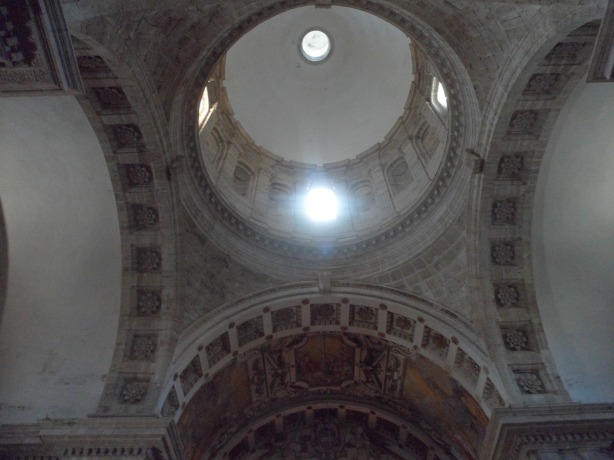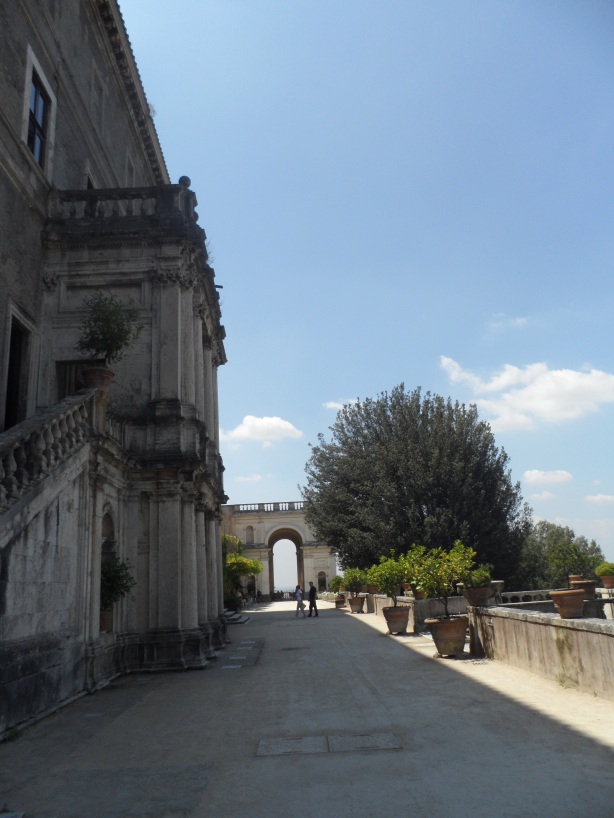This slideshow requires JavaScript.

Saint Peter’s Basilica
Architect: Collective
Location: Vatican City
Date: 1506-1626
Building Type: Church
Architecture Styles: Renaissance
Architectural Time Period: 1500s
Construction Type: Bearing Masonry
Context: Urban
Introduction(Information mainly based on Internet and Readings):
The Papal Basilica of Saint Peter in the Vatican, commonly known as Saint Peter’s Basilica, is a Late Renaissance church located within Vatican City. Designed principally by Bramante, Michelangelo, Carlo Maderno and Bernini, St Peter’s is the most renowned work of Renaissance architecture and remains one of the largest churches in the world. While it is neither the mother church of the Roman Catholic Church nor the cathedral of the Bishop of Rome, Saint Peter’s is regarded as one of the holiest Catholic sites. It has been described as “holding a unique position in the Christian world” and as “the greatest of all churches of Christendom”.
In Roman Catholic tradition, the basilica is the burial site of its namesake Saint Peter, one of the twelve apostles of Jesus and, according to tradition, was the first Bishop of Rome and therefore first in the line of the papal succession. Tradition and some historical evidence hold that Saint Peter’s tomb is directly below the altar of the basilica. For this reason, many Popes have been interred at St Peter’s since the Early Christian period. There has been a church on this site since the 4th century. Construction of the present basilica, over the old Constantinian basilica, began on 18 April 1506 and was completed on 18 November 1626.
St Peter’s is famous as a place of pilgrimage, for its liturgical functions. Because of its location in the Vatican, the Pope presides at a number of services throughout the year, drawing audiences of 15,000 to over 80,000 people, either within the Vatican Basilica, or in St Peter’s Square. St Peter’s has many strong historical associations, with the Early Christian church, the papacy, the Counter-reformation and with numerous artists, most significantly Michelangelo. As a work of architecture, it is regarded as the greatest building of its age. Saint Peter’s is one of the four churches of Rome that hold the rank of Major Basilica. Contrary to popular misconception, it is not a cathedral as it is not the seat of a bishop; the cathedra of the Bishop of Rome is located in the Archbasilica of St. John Lateran.
My own exploration:
Keywords: Baldacchino, Structural Member
Baldacchino

The altar with Bernini’s baldacchino
Bernini’s first work at St. Peter’s was to design the baldacchino, a pavilion-like structure 30 metres (98 ft) tall and claimed to be the largest piece of bronze in the world, which stands beneath the dome and above the altar. Its design is based on the ciborium, of which there are many in the churches of Rome, serving to create a sort of holy space above and around the table on which the Sacrament is laid for the Eucharist and emphasizing the significance of this ritual. These ciboria are generally of white marble, with inlaid coloured stone. Bernini’s concept was for something very different. He took his inspiration in part from the baldachin or canopy carried above the head of the pope in processions, and in part from eight ancient columns that had formed part of a screen in the old basilica. Their twisted barley-sugar shape had a special significance as the column to which Jesus was bound before his crucifixion was believed to be of that shape. Based on these columns, Bernini created four huge columns of bronze, twisted and decorated with olive leaves and bees, which were the emblem of Pope Urban.

The baldacchino is surmounted not with an architectural pediment, like most baldacchini, but with curved Baroque brackets supporting a draped canopy, like the brocade canopies carried in processions above precious iconic images. In this case, the draped canopy is of bronze, and all the details, including the olive leaves, bees, and the portrait heads of Urban’s niece in childbirth and her newborn son, are picked out in gold leaf. The baldacchino stands as a vast free-standing sculptural object, central to and framed by the largest space within the building. It is so large that the visual effect is to create a link between the enormous dome which appears to float above it, and the congregation at floor level of the basilica. It is penetrated visually from every direction, and is visually linked to the Cathedra Petri in the apse behind it and to the four piers containing large statues that are at each diagonal.

Structural Member

The main structural member I am focused on is the column, they has a large scale and the dimensions are noted in the sketch

The size of the column is huge compared to the size of a person
































